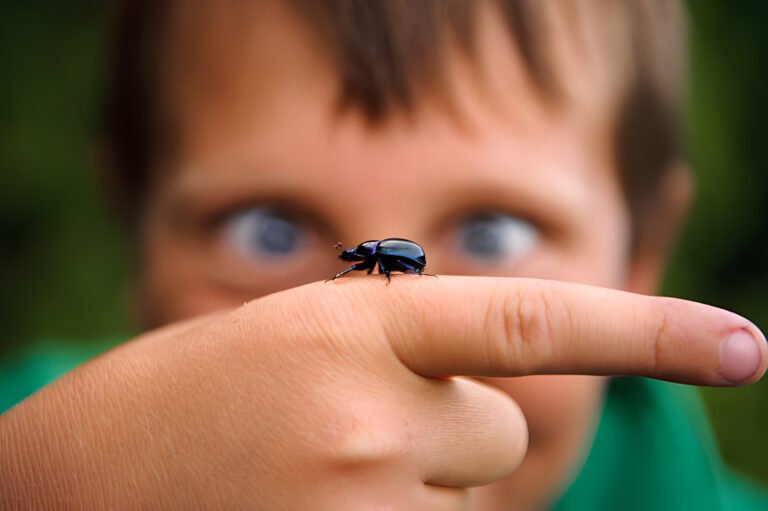Image Credit: Getty image
In the vast tapestry of the animal kingdom, the question of which creature holds the title of the strongest animal in the world has fascinated scientists and wildlife enthusiasts alike. This intrigue spans from the powerful muscles of the gorilla to the imposing weight of the blue whale, driving discussions and research that delve into natural selection and the incredible adaptations animals have developed to survive.
This article aims to provide an in-depth look at some of the most formidable creatures that roam the planet, from the gravity-defying strength of the dung beetle to the unmatched size and power of the African bush elephant. Other contenders for the title of the strongest animal in the world include the stealthy tiger, the aggressive grizzly bear, and the fearsome saltwater crocodile, each with attributes that could earn them the crown in different contexts. Through examining the physical capabilities, predatory prowess, and evolutionary advantages of these animals, we embark on a journey to understand not just who the strongest animal in the world is, but why their strength is crucial to their survival and the ecosystems they inhabit.
Dung Beetle
Dung beetles, small yet mighty, possess a strength that is truly remarkable for their size. They are capable of moving dung balls that weigh up to 50 times their own body weight, showcasing an incredible feat of strength that is unparalleled in the insect world.
Dung Beetle’s Incredible Strength
Male dung beetles utilize their formidable strength not only for rolling dung but also for combat, engaging in battles with rivals using their horn-like structures and strong front legs. This strength is crucial during mating seasons, where they must fend off competitors and secure a mate. The record for individual strength among these beetles goes to the Onthophagus taurus, which can pull a load equivalent to 1,141 times its body weight.
Dung Beetle’s Strength Relative to Size
In relation to its size, the dung beetle is not just the world’s strongest insect but arguably one of the strongest animals globally. If humans possessed the same strength relative to size, a person weighing 150 pounds could pull an astonishing 80 tons. This comparison highlights the extraordinary muscular power of dung beetles, which allows them to perform tasks that are vital for their survival and reproduction.
Dung Beetle’s Survival Techniques
Dung beetles have adapted various survival techniques that are as ingenious as they are effective. Dwellers, on the other hand, live directly within dung piles, exploiting the immediate resources available. Their strong sensory abilities enable them to locate dung efficiently, ensuring they maximize the nutritional benefits dung provides.
African Bush Elephant
African Bush Elephant’s Massive Power
The African Bush Elephant, recognized as the largest land mammal on Earth, exhibits a remarkable size, with adult males reaching up to 24 feet in length and 13 feet in height, and weighing as much as 11 tons. Their sheer physical presence underlines their status as one of the most powerful creatures roaming the planet. These elephants are capable of altering their environment significantly; they use their massive bodies to break down trees and shrubs, clearing pathways that benefit other wildlife and maintain the health of the ecosystem.
African Bush Elephant’s Trunk Strength
An extraordinary feature of the African Bush Elephant is its trunk, which contains over 40,000 muscles and tendons, allowing it to lift objects weighing more than 400 pounds. This trunk serves multiple purposes: it is used for drinking, breathing, and grabbing items, especially food. The trunk’s tip is incredibly sensitive and can manipulate small objects, which is essential for their feeding habits.
African Bush Elephant’s Role in Ecosystem
African Bush Elephants play a crucial role as ecosystem engineers. By digging up dry riverbeds to create watering holes and dispersing seeds through their dung, they contribute significantly to the ecological balance. Their activities promote the growth of new vegetation, which supports a wide range of animal species. Moreover, their movement through dense vegetation opens up areas for smaller animals and maintains the diversity of the habitats they roam.
Gorilla
Gorilla’s Muscular Force
Gorillas possess a level of strength that is both awe-inspiring and crucial for their survival. Known for their muscular might, these primates can lift up to 10 times their body weight. This incredible power aids them in daily activities such as foraging and defending against threats. Their muscle structure, especially in the arms, is highly developed, enabling them to perform feats like effortlessly climbing trees and lifting heavy objects.
Gorilla’s Strength in Daily Activities
The strength of gorillas is not just for show; it plays a pivotal role in their everyday life. From breaking apart tough vegetation to dismantling heavy branches for building nests, their physical power is essential. Witnessing a gorilla in action, whether snapping bamboo canes to access food or moving swiftly through the forest, highlights their ability to leverage this strength in their natural habitats.
Gorilla’s Defensive Capabilities
When faced with danger, gorillas have several defense mechanisms to protect themselves and their group. They may stand upright to appear larger or beat their chests thunderously to intimidate predators. Dominant silverbacks, who act as protectors, will charge at threats while displaying their strong canine teeth, which are capable of causing severe injuries. Living and moving in groups also enhances their defense, allowing them to collectively respond to threats more effectively.
Grizzly Bear
Grizzly Bear’s Fierce Strength
This strength is highlighted by their ability to lift heavy objects, such as rocks weighing up to 500 kilograms, with ease. Their muscular forelegs, supported by massive shoulder muscles, form a distinctive hump that not only aids in digging but also enables them to deliver fatal blows to large prey like moose, capable of decapitating them with a single swipe.
Grizzly Bear’s Hunting Abilities
Grizzly bears are formidable hunters, utilizing their sharp claws and powerful jaws to take down large animals such as elk, moose, and bison. Their hunting technique involves mauling their prey to the ground while biting, often not resulting in a quick kill. They can run up to 40 mph in short bursts, making them agile predators despite their size. Additionally, they are adept at fishing, particularly during salmon spawning seasons, catching fish with precision using their paws or mouths.
Grizzly Bear’s Physical Adaptations
The physical adaptations of grizzly bears are tailored to their harsh environments. Their thick fur coats provide necessary insulation against the cold, while their large paws with sharp claws afford them excellent traction on rugged terrains. These bears also have a highly developed sense of smell, which they use to locate food from great distances, and their large canines and molars are crucial for their omnivorous diet, which includes a variety of plants, small mammals, and carrion.
Blue Whale
Blue Whale’s Massive Size
Their heart alone can weigh around 600 kilograms, roughly the size of a small car, illustrating the sheer scale of these marine giants.
Blue Whale’s Swimming Power
Despite their colossal size, blue whales are capable of swimming at speeds of up to 20 miles per hour in short bursts, though they typically cruise at about 5 miles per hour. This agility is crucial for both feeding on vast amounts of krill and undertaking lengthy migrations from polar to equatorial waters as seasons change. Their swimming power is not only a display of their physical prowess but also an essential survival mechanism.
Blue Whale’s Ecological Importance
Blue whales play a pivotal role in marine ecosystems and climate regulation. Their feeding behavior helps maintain the health of marine food webs by controlling krill populations, which are essential for many other marine species. Furthermore, the iron-rich feces of blue whales provide critical nutrients for phytoplankton, which produce a significant portion of the world’s oxygen and absorb carbon dioxide. The ecological contributions of blue whales extend even after their death, as their bodies sink to the ocean floor, sequestering carbon and supporting deep-sea ecosystems.
Saltwater Crocodile
Saltwater Crocodile’s Bite Force
The Saltwater Crocodile is known for having the most powerful bite force of any living animal, measured at an astonishing 3,700 pounds per square inch (psi). This immense power enables the crocodile to exert a bone-crushing grip that is unmatched in the animal kingdom, capable of shattering the thick shells of turtles and bending metal pipes.
Saltwater Crocodile’s Aquatic Strength
As the largest living reptile, the Saltwater Crocodile exhibits remarkable aquatic abilities. They are proficient swimmers and can navigate across open oceans, covering hundreds of kilometers. Their muscular tails, which constitute nearly 40% of their body mass, act like powerful pistons, propelling them through water with bursts of speed that enhance their predatory prowess.
Saltwater Crocodile’s Hunting Techniques
Saltwater Crocodiles are apex predators and employ a variety of hunting methods to capture their prey. They are known for their stealth and patience, often lying in wait for hours at the water’s edge. Utilizing their explosive power, they can launch sudden attacks, grabbing unsuspecting animals and dragging them underwater to drown. Their hunting strategy includes the notorious “death roll,” a technique where they spin their bodies to dismember or incapacitate their prey swiftly.
Hippopotamus
The Hippopotamus, often recognized for its massive body and large, barrel-shaped torso, is not only one of the heaviest land mammals but also one of the most formidable. Adult hippos average 1,500 kg for males and 1,300 kg for females, equipped with wide-opening mouths that boast large canine tusks. Despite their stocky shape and short legs, hippos are surprisingly agile and capable of reaching speeds up to 30 km/h over short distances.
Hippopotamus’s Land Speed
Hippos are uniquely adapted for life both in water and on land. While they are not the fastest animals, they can move rapidly when necessary, with speeds ranging from 19–28 miles per hour on land.
Hippopotamus’s Jaw Strength
One of the most striking features of the hippopotamus is its jaw strength, which is among the strongest of all land animals, exerting a force of about 1,820 PSI. This formidable bite force is a critical defense mechanism and a display of dominance among males. Their jaws, powered by robust masseter and digastric muscles, can open almost 180°, allowing them to use their continuously growing incisors and canines effectively in combat.
Hippopotamus’s Territorial Behavior
Territoriality in hippos is predominantly observed in water, where males establish and defend stretches of rivers or lakeshores as exclusive mating territories, which can range from 50-100 meters in rivers to 250-500 meters along lakeshores. These territories are not defended for food resources but for mating rights, with males showing a high degree of intolerance that varies with local conditions such as crowding and female sexual cycles. Interestingly, hippos engage in a unique behavior known as “muck-spreading,” where they defecate while spinning their tails to distribute their feces over a greater area, although this is not typically for marking territory.
Conclusion
Through this exploration of the animal kingdom’s strongest members, from the prodigious strength of the dung beetle to the colossal might of the blue whale, we have uncovered not just the raw power these creatures possess but also the critical roles they play within their ecosystems. Each animal, with its unique adaptations, demonstrates the diverse ways strength manifests in nature, whether it be through sheer physical force, survival strategies, or ecological impact. The significance of understanding these strengths extends beyond mere fascination, shedding light on the intricate balance of ecosystems and the importance of each species in maintaining the health and diversity of our planet.
Reflecting on the remarkable capabilities of these animals beckons a deeper appreciation for the natural world’s wonders and the evolutionary marvels that have enabled such distinct forms of strength. As our journey through the animal kingdom concludes, let us carry forward a renewed sense of awe and a commitment to the stewardship of the natural world, recognizing the interconnectedness of all life and the critical role of strength in survival and ecological harmony.
FAQs
1. Which animals are considered the top 10 strongest in the world?
The list of the top 10 strongest animals globally includes the Blue Whale, African Elephant, Siberian Tiger, Saltwater Crocodile, Grizzly Bear, Gorilla, Anaconda, and Musk Ox.
2. Which animal appears weaker than it actually is?
The dung beetle, though only about 1.25 inches in size, is astonishingly strong for its size. It can push balls of dung weighing 1,141 times its own body weight, equivalent to a human lifting a space shuttle.
3. What is the strongest animal on the planet?
The African bush elephant holds the title for the strongest animal on Earth. It can lift 6,000 kg, roughly its own body weight, from a lying position. Its trunk alone, which contains over 40,000 muscles, can lift more than 200 kg.
4. Which animal is known as the strongest fighter?
Among the animal kingdom’s mightiest, the African Elephant tops the list for brute strength. Following closely are the Water Buffalo, Cape Buffalo, Musk Ox, Bison, Ox, Gorilla, and Rhinoceros, all known for their formidable strength in combat.
























Can you be more specific about the content of your article? After reading it, I still have some doubts. Hope you can help me.